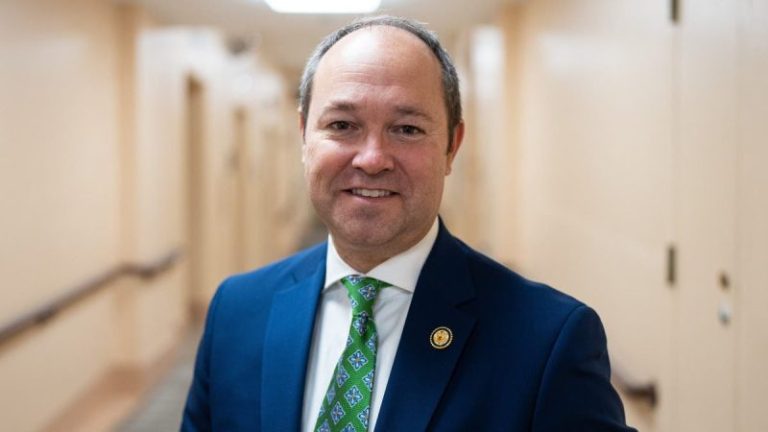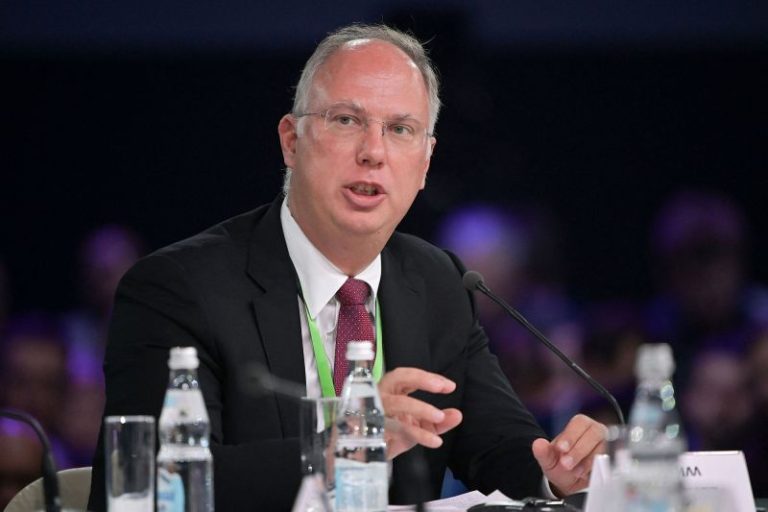Rep. Marlin Stutzman, R-Ind., has spent the better part of the last decade in Indiana, running various businesses and coaching his sons’ baseball team.
Before that, he had a front-row seat for most of the Obama administration, followed by the meteoric and unprecedented rise of now-President Donald Trump. Stutzman was a part of political history himself, having been one of the original members of the House Freedom Caucus — a group that has grown to be known as a bastion of ideological conservatism and, at times, a thorn in the side of House GOP leaders.
Now he’s back as one of several first-term House Republicans, succeeding Sen. Jim Banks, R-Ind., as a member of a perilously thin House GOP majority.
But according to Stutzman, who previously served in Congress from 2010 to 2017, he sees Republicans as more aligned with each other than before.
‘I feel like it’s different. I don’t think the GOP conference is as far apart — you know, moderates to conservatives — as it was back in 2010,’ he told Fox News Digital in an interview.
‘I was looking at the membership in 2010, and there were true moderates. I think we’re actually much closer together now than what we were back then. And, of course, we had large majorities. So that creates other challenges. So having a tight majority is not a bad thing at all. It actually makes you unify.’
He credited that re-alignment in large part to Trump, pointing out that he and other Republicans were first elected in 2010 as a backlash against former President Barack Obama rather than in support of the leading party’s agenda.
‘We won the 2010 election because it was a reaction to Obama. And in 2020 — I mean, you could say every election is a reaction to the incumbent party, but I think in this case, after the Biden years, the American people elected Trump because they believed he could move the country forward,’ Stutzman said.
‘And so we have a leader that is casting a vision and is clear in his messaging, and it gives us the chance to, you know, coalesce behind his leadership. So that’s a huge help, compared to 2010.’
He also disputed the notion that the Freedom Caucus was founded to be ‘obstructionist’ to House GOP leaders, despite members of the group leading well-known coups against senior Republicans in the past.
‘There’s a lot of smart people that wanted to just be part of a group that looked at things from every angle and was really being productive. And so that’s why I wanted to join it, because I wanted to be at a place that I could learn, I could really dive deep and learn from other people and staff that were part of the caucus to really understand the policy, but also talk through the strategy,’ he said.
‘It was never designed to be an obstructionist caucus. There have been times that it’s definitely been labeled that and accused of that . . . any obstruction was to stop bad things from happening. Not to obstruct the good things from moving forward.’
Stutzman said that being a private citizen running businesses for eight years gave him perspective on the value of consensus-building, allowing him to return to Congress with an emphasis on the ‘big picture.’
‘You’re never going to get everything you want. You know, find a way to support the team and find a way to support us to a yes,’ Stutzman reflected.
‘Now, look, there’s going to be times when you just say no, And that’s just part of negotiating. But I think the main thing is just fight hard, offer everything you have. But then at the end of the day, let’s take a win and then move on to the next fight.’










